As an experienced pest control technician specializing in school pest control services, I’ve worked with public, private, and charter schools, and I understand the unique challenges they face in keeping pests at bay. Whether it’s ants marching through the cafeteria or rodents making themselves at home in the storage room, these unwelcome visitors can disrupt the educational environment and pose health risks to students and staff alike. That’s why I’ve created this guide—to assist school administrators in maintaining a pest-free learning environment while protecting their staff and students and navigating the complex regulations that come with it.
Understanding the Impact of Pests in Schools
Common Pests Found in Educational Settings
When you think of pests, what comes to mind? For many, it might be a cockroach scuttling across the floor or a mouse darting between lockers. In my years of experience, I’ve encountered a variety of pests in schools. Here are some of the most common offenders:

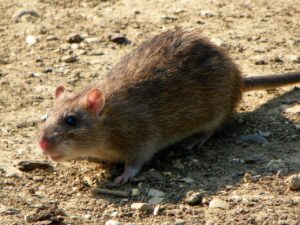
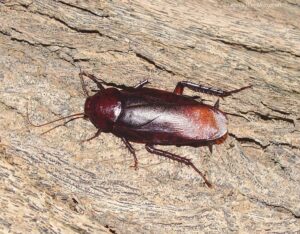
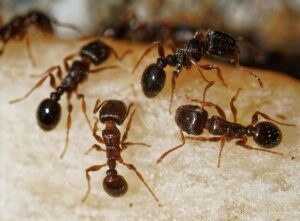
- Rodents: Mice and rats are notorious for finding their way into schools, especially during the rainy months. I remember one school where the library was overrun with mice because they nested in an unmonitored storage room filled with books and papers.
- Cockroaches: These resilient critters are often found in kitchens and bathrooms, thriving in warm, moist environments.
- Ants: Whether it’s a small line of ants in the classroom or carpenter ants in the walls, they can be persistent and difficult to eliminate.
- Gophers: These pests can cause significant damage to sports fields and ornamental plants, sometimes creating fall hazards. Additionally, most poisons are not permitted on school grounds, making control more challenging.
Health Risks Associated with Pest Infestations
Pests are not just an inconvenience; they can also pose serious health risks. For example, rodent droppings can carry diseases like hantavirus and leptospirosis, while cockroaches are known allergens. I once worked with a school nurse who reported an asthma case from a student, which we traced back to a cockroach infestation. It’s crucial to recognize that maintaining a pest-free environment is essential for the health, well-being, and attention of everyone on campus.
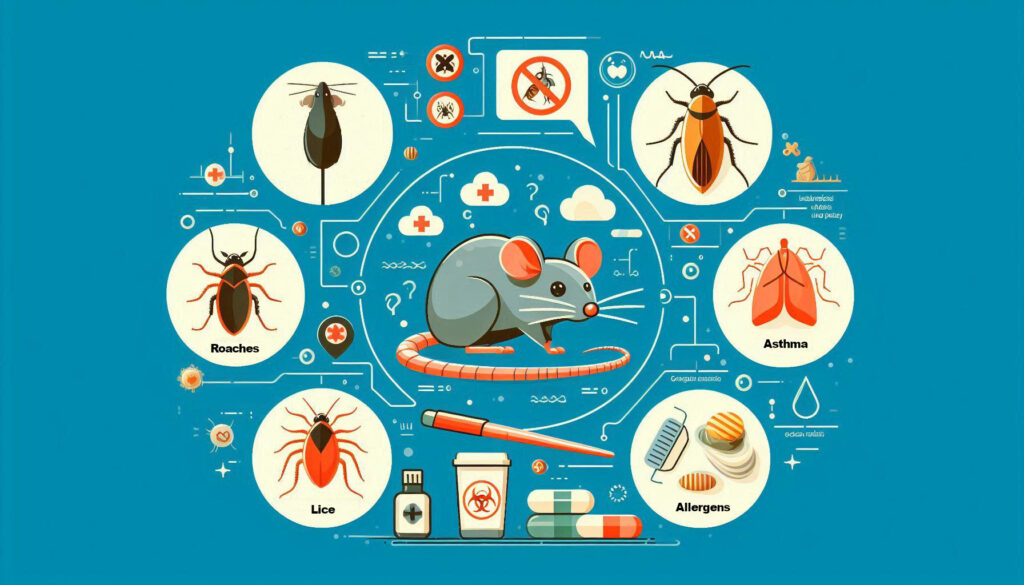
How Pests Affect the Learning Environment
Pests can be a significant distraction for students and staff. Imagine a rat suddenly running across the classroom floor—how quickly would that derail the lesson? It shifts students’ focus from their studies to the chaos caused by the unexpected visitor. This not only disrupts the learning experience but can also tarnish the school’s reputation. In my experience, addressing pest issues promptly is essential for fostering a more conducive learning environment.
Legal and Regulatory Considerations for School Pest Control Services
Compliance with the California Healthy Schools Act (HSA)
In California, schools are subject to the Healthy Schools Act (HSA), which mandates that school districts take measures to protect students, staff, and the environment from harmful pesticides. The HSA requires schools to:
- Notify parents and staff about pesticide use on school grounds.
- Maintain records of pesticide applications.
- Implement Integrated Pest Management (IPM) practices that focus on long-term prevention.
Understanding and adhering to the HSA is not only a legal requirement but also a important step in ensuring a safe environment for students in public, private, and charter schools alike. I once worked with a private school that was completely unaware of the mandatory posting and necessary records required under the act. Schools that prioritize Integrated Pest Management (IPM) not only comply with regulations but also tend to experience fewer pest problems over time.
Implementing Effective School Pest Control Programs
Importance of a Comprehensive School Pest Control Plan
Every school needs a well structured pest management plan to prevent and address infestations effectively. Key elements of this plan should include:
- Regular Inspections: Routine checks are the most important step in the regular pest control program. This helps identify potential issues before they become significant problems and gives the tech and facilities time for a treatment plan weather involving chemical or not.
- Communication: Communication is key between staff facilities, pesticide applicators, parents, and students. While that is a lot, modern tools like parent portals or email lists can make it manageable with a bit of planning.
Regular Inspections and Monitoring
Regular inspections and monitoring are needed for detection of pests, sanitation issues, and structural vulnerabilities that could permit pest entry. I recommend that schools schedule routine visits from pest control professionals to check for signs of infestation, monitor pest activity, and provide recommendations. Groundskeepers can also play a valuable role in identifying potential issues, even if they’re not fully trained in pest management.
Preventative Measures for Schools
Building Maintenance
Keeping pests out starts with maintaining the building itself. Here are some key areas to focus on:
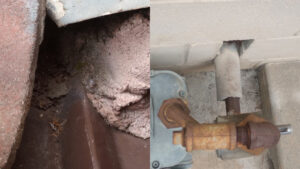
- Sealing Entry Points: Inspect the campus for gaps, cracks, and holes that pests can use to enter. That school I mentioned earlier with that mouse problem, we discovered that they were getting in through a gap under a warped water heater closet door, caused by sprinkler water hitting it. After sealing the gap and setting traps, there were no indoor rodent sightings for years.
- Proper Waste Disposal: Pests are attracted to food sources. Make sure garbage bins are emptied regularly and that food is stored in airtight containers.
Landscaping and Outdoor Management

The outside of the school can also attract pests. Maintaining a tidy landscape helps deter pests from getting too close to the building. Here are a couple of tips:
- Keep Vegetation Trimmed: Overgrown bushes and trees can provide cover for pests. Trim plants so they are at least a foot away from building walls.
- Manage Outdoor Areas: Ensure that playgrounds and outdoor eating areas are kept clean and free of food debris. This simple practice can significantly reduce pest activity.
Educating Staff and Students
Education is a powerful tool in pest prevention. Create awareness among staff and possibly students about the importance of keeping the school pest-free. I like to create a staff activity log for facilities and the technician. It helps finding and addressing problems quick and gives responsibility.
Responding to Pest Incidents
Establishing a Response Protocol
Having a clear protocol for addressing pest incidents is critical. Here are some steps schools can take:
- Immediate Reporting: Encourage staff and students to report pest sightings as soon as they occur. Quick action can prevent a small problem from turning into a significant infestation. Make it easy as possible, a shared spreadsheet is a great way to automate the flow.
- Follow-Up Inspections: After addressing a pest issue, conduct follow-up inspections to ensure the problem has been resolved.
Communication with Stakeholders
It’s important to keep parents, staff, and students informed about pest control measures and any incidents that may occur. Communication can help alleviate concerns and build trust within the school community. Under the Healthy Schools Act, schools are required to notify parents who wish to be informed of every pesticide application.
If you have a student portal, this can be an effective tool for communication. Better yet, a simple email mailing list software can manage notification sign-ups for parents and facilitate delivery. Many pest control companies can now send pesticide use reports by email, automatically integrating with school notification lists. By setting the mailing list email as the recipient in their software, replies can be directed back to the pest control company to address parent questions directly.
Choosing the Right School Pest Control Services
Criteria for Selecting a School Pest Control Provider

When selecting a pest control service, look for providers with experience in school pest control. Check for:
- Knowledge of Regulations: Ensure the provider is well-versed in the Healthy Schools Act (HSA) and can follow the protocols required by law.
- Integrated Pest Management (IPM) Practices: Confirm that the provider uses eco-friendly and sustainable methods, as these are also mandated by the HSA.
Questions to Ask Potential School Pest Control Service Providers
Before hiring a pest control company, don’t hesitate to ask them questions such as:
- Are you licensed in the state, and do you carry liability insurance and workers’ compensation if you have employee applicators? Verify these credentials to ensure liability protection.
- What pest control methods do you use specifically for schools?
- Do you offer products that are exempt from the 72-hour notice required by the Healthy Schools Act (HSA)? If not, could you?
- How do you ensure the safety of students and staff during treatments?
- Can you manage the required chemical notifications for our facility?
Conclusion
Keeping schools pest-free is not just a matter of convenience; it’s required for the health and safety of everyone involved. By implementing effective pest management practices and adhering to legal regulations like the California Healthy Schools Act, administrators can create a safe learning environment.
Take Action on School Pest Control

Ready to take action? Download DPR’s Healthy Schools Act FAQ and ensure your institution is taking the necessary steps to stay pest-free. For additional resources and ideas on effective pest removal, check out our Pest Library for internal education.
If you have any questions or would like a consultation on school pest control services, call us at (661) 645-6855 or fill out the contact form below. Together, we can create a safer, healthier environment for your students and staff!

